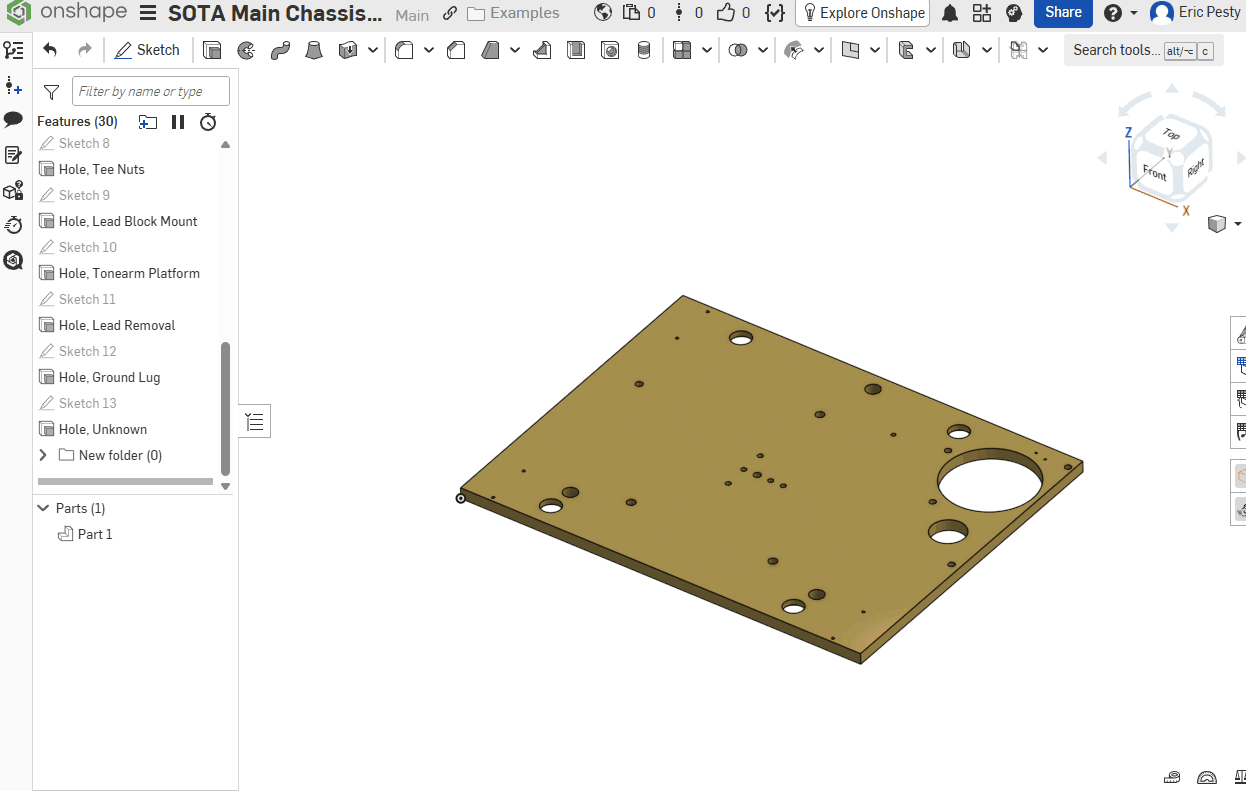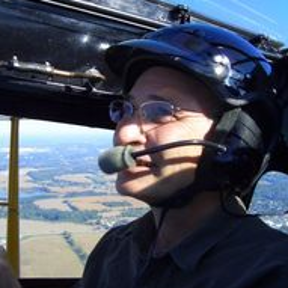Welcome to the Onshape forum! Ask questions and join in the discussions about everything Onshape.
First time visiting? Here are some places to start:- Looking for a certain topic? Check out the categories filter or use Search (upper right).
- Need support? Ask a question to our Community Support category.
- Please submit support tickets for bugs but you can request improvements in the Product Feedback category.
- Be respectful, on topic and if you see a problem, Flag it.
If you would like to contact our Community Manager personally, feel free to send a private message or an email.
Best Of
Re: Allowing for mate connector selection. What's the correct syntax?
"multiple body" options. That sounds like the issue I was running into. However, both other answers work as well.
Thanks! @Konst_Sh @Matt_Shields @MichaelPascoe
 ry_gb
ry_gb
Re: Custom Feature: Loft Fillet
Updated to remove tracking info. We wouldn't want @NeilCooke to know I sometimes read his emails, now would we?
Re: How to automatically choose a configured assembly?
@troy_ostrander There different way to get what you want here. To keep it more similar to your example, I have set up a little doc that you can checkout here.
In Onshape, there is a conditional logic capability that functions just like the excel formula if(condition, do if true, do if false).
The way to do conditions is by using the same ternary logic that one would use in JavaScript. That is, condition ? do if true : do if false.
So, you can write in any variable or configuration input variable,
#depth < 20in ? "TOO SMALL" : (#depth < 100in ? 20in : (#depth < 150in ? 100in : (#depth < 200in ? 150in : 200in)))
In the example doc, I have created a variable studio which I have configured. I did not have to do this but I wanted to demo a nice clean way to create more complicated logic in one place which allows propagating that logic cleanly in any place. Because I programmed the variable within the variable studio to react as intended to changes to the #LENGTH input, we can now drop that variable in all over the place if we want and anything being driven by it also reacts as intended. We do not have to copy and paste the text of that logic all over the place. We can just change that one variable studio and everything referencing it immediately has access to that newly edited logic. You can also lock references to that variable by switching items to reference a version of the variable studio. This way you have greater control over deciding when a particular item should start using the updated logic to the variable or not at all.
Variable studios in Onshape were a game changer when they were introduced. However, I did not use them too much simply because I had sort of found other ways of doing things without globally accessible variables. Recently, when the ability to configure them was introduced, I suddenly found I can't stop finding ways to implement them and tidy up lots of complicated, duplicated logic that is scattered throughout my huge library of heavily configure company product models. Hope this helps some☺️
Flattened Onshape DXF Export Not Accepted by Adobe Illustrator
Hi there,
Just noticed an issue when I was exporting DXFs from Onshape to Adobe Illustrator and am not sure if it's a bug on Onshape or Illustrator's end.
When flattening a curved face in Onshape and then exporting the flattened face as a DXF from a part studio, the exported DXF when imported into Adobe Illustrator is not accepted. A regular DXF file of a face which is already flat (flatten surface tool was not used) imported into Illustrator works fine.
Thanks!
Is there a trick to getting constrained orbit to work via the ALT key?
I'm new to Onshape. Running Chrome on Windows 10.
In preferences, I've selected "Onshape (default)" for "mouse controls".
ALT + RMB drag does not result in constrained rotation. Holding the ALT key down doesn't seem to change the behavior at all. Rotation/orbit occurs about all axes. I've tried both ALT keys.
Same problem in Microsoft Edge.
I've confirmed via other programs that my ALT key is, in fact, working.
Any thoughts? Thank you.
Re: Texture (New Custom Feature!)
I had a similar experience yesterday with configurations.
Not with this featurescript but with something else.
I think this is a glitch with your browser's cache.
It only happened to me once. I thought it was my fault entering it too fast. But every time I tried to edit it would fail, or only pick up partial information.
To fix it reset my browser's cache and reloading. Haven't seen it since.
to reset you cache may be different on other browsers, here's how to do it on EDGE
Click the menu in the top right
go to more tools then developer tools
then right click your refresh button and choose empty cache and hard refresh
now you can close the developer console on the right
Re: Querying parts created by boolean subtraction
Just squashed a bug with this that was bothering me for too long.
Re: New Dude Having Problems with Copying Parts
Noticed you are using the free plan so had a look…
Here's how you can create the Lead sheet part in 40s by using the same part studio as your main chassis:
I would also recommend using the "hole wizard" tool for screw clearance holes etc…
Re: New Dude Having Problems with Copying Parts
Was going to say as well: these should all be in the same "document", and the plates that share the same holes should either be configurations of the same part of parts created in the same part studio!
"Copy workspace" is going to be a very inefficient way to do this but if you wanted to make it work, inserting parts from a different document requires creating a version so I am guessing you didn't do that after the "copy workspace" and making the changes (so you are only able to insert the part as it was immediately after the "copy workspace" operation.
The blocks also look very similar and could likely just be configurations of a single part…
A bit overkill for the "level" of your project but this is a good one to watch for project organization, especially if you plan on doing more complex thins in Onshape:
https://www.youtube.com/watch?v=pIjq6S8TUME
Re: How do I reduce extremely long assembly regeneration times?
I'm temporarily working on my old lap top which is slow compared to the desk top. When I first opened your document it took a while but after that it sped up . There does seem to be a lot of detail. If you can remove some of the detail I think it will get notably faster. Like the filleted corners in the rail hole corners. I don't know what gear generator you used but they seem to be a major slow down. If you can make configured parts you may want to use design/reduced configurations. When you're are ready to print or make drawings or calculate mass. Then replace the simplified parts with design parts. Simplified gears don't even need all the teeth but they will continue to function normally. The number of mate connecters seems to be excessive. I left a sample of making a mate with out the connecters. For speed I also suppressed the linear arrays. These can be hidden to speed things up while not working on them.
The other thing to look at would be your computer and network speed. If the video card is lacking there is not much to do except replace if you can. My old lap top wouldn't take any kind of useful video card replacement which is why I switched. too bad since the rest of it is still a good machine. There is a native tool to find what's gobbling up resources. If the net work connection is slow check with the system admin.
I was going to animate but there were no animatable mates. like revolute or slider or gear mates. Check to see if the document work space is up to the latest.









